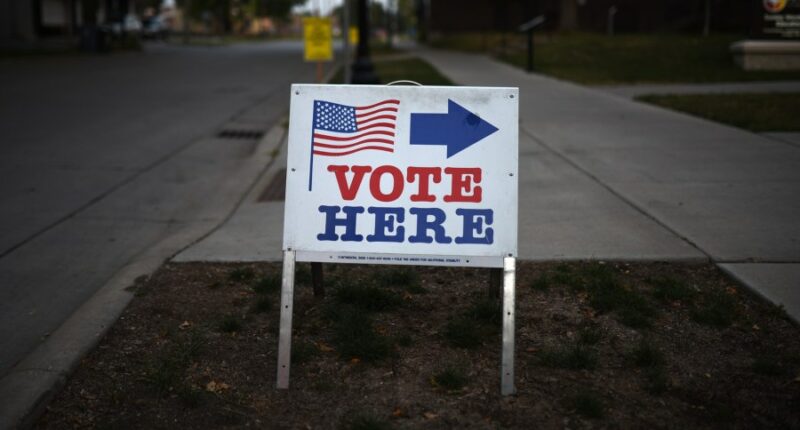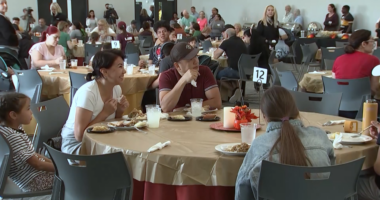Share this @internewscast.com

(The Hill) – The brewing war over redistricting is underscoring the increasing importance of state legislatures heading into the midterms.
Texas Republicans unveiled a new set of proposed House lines on Wednesday, creating five more Republican-friendly districts ahead of 2026. Legislators in states like New York and Maryland are similarly beginning to take measures into their own hands amid the redistricting tit-for-tat.
The broader turmoil over changing congressional lines is putting a fresh spotlight on state legislatures’ ability to shape federal politics, though some experts say national donors still need to pay more attention to local races.
“So local races and state House races, state Senate races have always mattered,” said Republican strategist Jimmy Keady, who’s worked on state legislative races.
“They’re just becoming more important in the long run, because now they’re directly influencing representation that is happening in the federal space. And I think the smart candidates are talking about that,” he added.
Texas Republicans finally issued their proposal for a new House map, which will have major implications for lawmakers representing areas near Dallas-Fort Worth, Austin, Houston and the southern border. The Texas GOP currently holds 25 seats while Democrats hold 12. One other seat, represented by the late Rep. Sylvester Turner (D-Texas), awaits a replacement in a special election this November.
The new map would add five House seats that would have gone for President Trump by double digits, increasing the possibility Republicans increase their majority in the congressional delegation to 30 House members.
While the map is not set in stone, the larger redistricting process playing out in the Lone Star State has prompted other states both red and blue to consider doing mid-decade redistricting in response.
More importantly, the broader battle over redrawing House maps is underscoring that state legislative elections can impact issues of national importance, including federal races.
Mandara Meyers, executive director of The States Project, noted how Democrats narrowly lost key state House races in their bid to flip nine seats to gain a Democratic majority in the lower chamber in 2020.
“So little attention is paid to these state legislative races, and so few votes can make a difference, not just in winning or losing a single election, but in control of an entire legislative chamber,” she said.
To be sure, state legislatures have been receiving growing attention for some time as they’ve become the epicenter over battles on issues like election certification, school choice and abortion access.
While Republicans have been focused on state legislative races particularly during the 2010 cycle with their REDMAP program, which saw key GOP gains down ballot in state houses Democrats have struggled to match their Republican counterparts in terms of attention and fundraising to these critical races.
Even though Democrats have started to outperform in special elections, including in states like Alabama and Iowa, several Democratic-aligned groups focused on state legislative elections said they’ve heard little interest from donors about the races, even amid the redistricting battle.
“A little bit,” Forward Majority CEO Leslie Martes told The Hill when asked if she had been hearing more from donors who were more interested in contributing given the redistricting news.
“One of our problems is that state legislative resources are further down the list for donors, that they want to fund federal work first,” she said, noting that “the lack of dedicated funders for this work” is a problem.
Mandara Meyers, executive director of The States Project, suggested a similar dynamic was playing out with her group.
“When we look at the issues that impact people’s daily lives, we believe state legislators are the most important policymakers in the country, and yet again, much of the focus from donors, from the media, tends to be at the national level,” she said. “So we are not seeing the kind of shift that we would like to see towards the importance of states.”
In a memo released earlier this month by Heather Williams, the president of the Democratic Legislative Campaign Committee (DLCC), she pointed out that there would be consequences for the party if Democrats continued to prioritize federal races at the expense of down-ballot ones.
She specifically pointed to redistricting as one reason why members of the party needed to start paying attention to state legislative races, noting “Democrats are still digging themselves out of the hole we found ourselves in after the GOP executed their $30 million REDMAP strategy that gained them 20 legislative chamber majorities and the ability to unilaterally draw over 340 congressional districts.”
“To have a shot at winning and maintaining a Democratic majority in the House of Representatives moving forward, Democrats must reassess our failed federal-first strategy and get serious about winning state legislatures ahead of redistricting not just in the final months of 2030,” she said, “but starting now.”
Some Republican groups are similarly invoking redistricting as reason for their party to continue paying attention to the key down ballot elections.
“The only way to halt the Democrats’ relentless efforts to manipulate district lines is to win state legislative races cycle after cycle,” said Mason Di Palma, spokesman for the Republican State Leadership Committee (RSLC), in a statement, knocking Democrats for both advocating for redistricting commissions while also pushing for new map lines mid-decade in response to Texas.
Despite the attention redistricting has received nationally, that issue isn’t necessarily playing out in all states. Redistricting is particularly tricky for more evenly divided legislatures like Minnesota and Pennsylvania.
A Minnesota Senate Republican spokesperson told The Hill in an email that they couldn’t “comment on any campaign activity, including donor conversations” but noted of the state’s maps that they “have not been contested or discussed as needing change.”
The Minnesota House has a 67-66 edge, with Democrats looking to fill a vacancy after the assassination of former House DFL Leader Melissa Hortman. The state House has a power-sharing agreement between the two parties but a Republican speaker. The state Senate has two vacancies right now but has a slight 33-32 Democratic edge.
Pennsylvania Senate Democratic Leader Jay Costa (D) similarly told The Hill that “it’s not being discussed as much” on the legislative side. The state Senate has a 27-23 GOP edge while Democrats hold a narrow 102-101 majority in the state House.
“The bigger issue is holding onto the majority,” he said, referring to the state Supreme Court majority and its retention races this year, “and making sure Gov. Shapiro gets reelected, which I think he’s the ultimate backstop in that regard on redistricting.”













